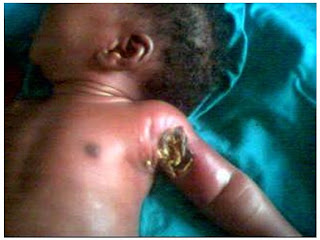Pathophysiology
Organisms spread from sub Q tissues along superficial and deep planes, facilitated by bacterial enzymes and toxins.
Infection causes vascular occlusion, ischemia, necrosis.
Superficial nerves damaged, producing anesthesia.
Septicemia ensues
M1 and M3 surface proteins increase adherence of the bacteria to the tissues, protect from phagocytosis.
Streptococcal pyrogenic exotoxins release cytokines and produce hypotension.
Morbidity and Mortality
Mortality rate as high as 25%.
Cases with sepsis and renal failure have a mortality rate as high as 70%.
Organisms spread from sub Q tissues along superficial and deep planes, facilitated by bacterial enzymes and toxins.
Infection causes vascular occlusion, ischemia, necrosis.
Superficial nerves damaged, producing anesthesia.
Septicemia ensues
M1 and M3 surface proteins increase adherence of the bacteria to the tissues, protect from phagocytosis.
Streptococcal pyrogenic exotoxins release cytokines and produce hypotension.
Morbidity and Mortality
Mortality rate as high as 25%.
Cases with sepsis and renal failure have a mortality rate as high as 70%.
Types
Type I usually occurs after trauma or surgery.
May be mistaken for simple wound cellulitis, but severe pain and systemic toxicity is a clue to underlying necrosis.
Also observed in urogenital or anogenital infections.
Type II is the so-called flesh eating bacterial infection caused by group A strep.
Type III, or clostridial necrosis is gas gangrene. This skeletal muscle infection may be associated with trauma or recent surgery.
Features Suggesting It
Rapid progression
Poor therapeutic response
Blistering necrosis
Cyanosis
Extreme tenderness
High temperatures, tachycardia, hypotension, altered mental status.
Type I usually occurs after trauma or surgery.
May be mistaken for simple wound cellulitis, but severe pain and systemic toxicity is a clue to underlying necrosis.
Also observed in urogenital or anogenital infections.
Type II is the so-called flesh eating bacterial infection caused by group A strep.
Type III, or clostridial necrosis is gas gangrene. This skeletal muscle infection may be associated with trauma or recent surgery.
Features Suggesting It
Rapid progression
Poor therapeutic response
Blistering necrosis
Cyanosis
Extreme tenderness
High temperatures, tachycardia, hypotension, altered mental status.
Causes
Group A beta-hemolytic strep not only cause.
Haemophilus, and Staph also associated.
Diabetes predisposes a patient to NF.
Immunosupression predisposes a patient to NF.
Still, 50% occur in young healthy people.
Complications
Sepsis and renal failure
Metastatic cutaneous plaques
Systemic toxicity and death
Loss of limb, deformities, psychosocial issues
Medical/legal issues....
necrotizing fasciitis Bacteria



No comments:
Post a Comment